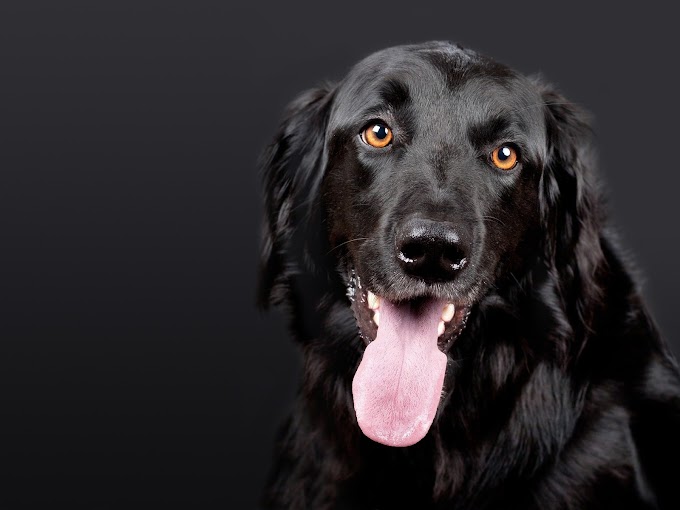Dog Nutrition Tips_Part _Feeding Your Senior Dog
Dogs begin to show
visible age-related changes at about seven to 12 years of age. There are
metabolic, immunologic and body composition changes, too. Some of these may be
unavoidable while others can be managed with diet. When feeding your older dog,
the main objective should be to maintain health and optimum body weight, slow
development of chronic disease and minimize diseases that may already be present.
Your Pet’s Size Will
Determine When to Begin a Senior Diet
As your dog ages, health issues may arise including deterioration of skin and coat, loss of muscle mass, more frequent intestinal problems, arthritis, obesity, dental problems and decreased ability to fight off infection. Since smaller dogs live longer and don't experience these age-related changes as early as bigger dogs, size is used to determine when it’s time to feed your canine a senior diet.
As your dog ages, health issues may arise including deterioration of skin and coat, loss of muscle mass, more frequent intestinal problems, arthritis, obesity, dental problems and decreased ability to fight off infection. Since smaller dogs live longer and don't experience these age-related changes as early as bigger dogs, size is used to determine when it’s time to feed your canine a senior diet.
A good
guideline to follow is:
· Small breeds and dogs weighing less than 20 pounds—7 years of
age
· Medium breeds and dogs weighing 21 to 50 pounds—7 years of age
· Large breeds and dogs weighing 51 to 90 pounds—6 years of age
· Giant breeds and dogs weighing 91 pounds or more—5 years of age
Avoid
"Senior" Diets That Have Reduced Levels of Protein
Studies have shown that the protein requirement for older dogs does not
decrease with age, and that protein levels do not contribute to the development
or progression of renal (kidney) failure. It is important to feed older dogs
diets that contain optimum levels of highly digestible protein to help maintain
good muscle mass.
Older dogs have been
shown to progressively put on body fat in spite of consuming fewer calories.
This change in body composition is inevitable and may be aggravated by either
reduced energy expenditure or a change in metabolic rate. Either way, it is
important to feed a diet with a lower caloric density to avoid weight gain, but
with a normal protein level to help maintain muscle mass.
Talk To Your
Veterinarian About Increasing Your Senior Dog’s GLA And FOS Intake
Gamma-linolenic acid (GLA) is an omega-6 fatty acid that plays a role in the maintenance of healthy skin and coat. Although it is normally produced in a dog's liver, GLA levels may be diminished in older dogs.
Gamma-linolenic acid (GLA) is an omega-6 fatty acid that plays a role in the maintenance of healthy skin and coat. Although it is normally produced in a dog's liver, GLA levels may be diminished in older dogs.
Aging can affect a
dog’s intestinal bacteria, which can result in symptoms of gastrointestinal
disease. Senior diets for dogs should contain FOS (fructooligosaccharides) to
promote the growth of beneficial bacteria.
Look For Foods with
High Levels of Vitamin E and Beta-Carotene
Antioxidants such as vitamin E and beta-carotene help eliminate free radical particles that can damage body tissues and cause signs of aging. Senior diets for dogs should contain higher levels of these antioxidant compounds. Antioxidants can also increase the effectiveness of the immune system in senior dogs.
Antioxidants such as vitamin E and beta-carotene help eliminate free radical particles that can damage body tissues and cause signs of aging. Senior diets for dogs should contain higher levels of these antioxidant compounds. Antioxidants can also increase the effectiveness of the immune system in senior dogs.
Maintain Consistency
Routine care for geriatric pets should involve a consistent daily routine and periodic veterinary examinations to assess the presence or progress of chronic disease. Stressful situations and abrupt changes in daily routines should be avoided. If a drastic change must be made to an older pet's routine, try to minimize stress by introducing the change in a gradual manner.
Routine care for geriatric pets should involve a consistent daily routine and periodic veterinary examinations to assess the presence or progress of chronic disease. Stressful situations and abrupt changes in daily routines should be avoided. If a drastic change must be made to an older pet's routine, try to minimize stress by introducing the change in a gradual manner.















0 Comments
feel free to connect with us...
Emoji